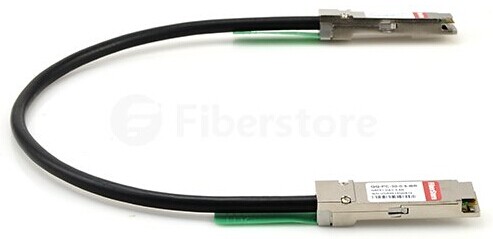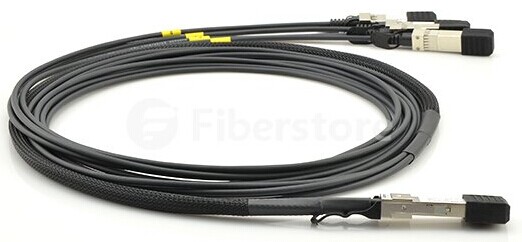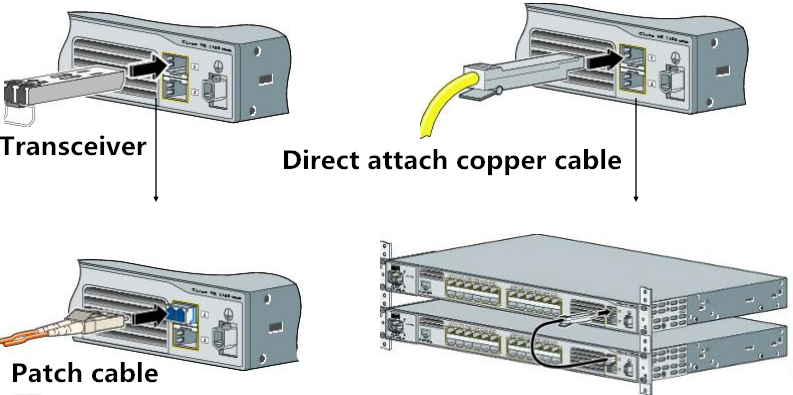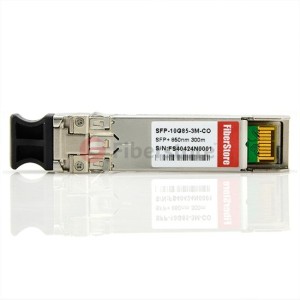There’s been a lot of talk lately surrounding bidirectional 40 Gb/s duplex applications, or BiDi for short. Currently offered as a solution by Cisco®, BiDi runs over duplex OM3 or OM4 multimode fiber using QSFP modules and wavelength division multiplexing (WDM) technology. It features two 20 Gb/s channels, each transmitting and receiving simultaneously over two wavelengths on a single fiber strand – one direction transmitting in the 832 to 868 nanometer (nm) wavelength range and the other receiving in the 882 to 918 nm wavelength range. Avago Technologies also offers a similar QSFP BiDi transceiver.
Unidirectional 40 Gb/s duplex fiber solutions are available from Arista and Juniper. These differ from the BiDi solution in that they combine four 10 Gb/s channels at different wavelengths – 1270, 1290, 1310, and 1330 nm – over a duplex LC connector using OM3 or OM4 multimode or singlemode fiber. These unidirectional solutions are not interoperable with BiDi solutions because they use different WDM technology and operate within different wavelength ranges.

While some of the transceivers used with these 40 Gb/s duplex fiber solutions are compliant with QSFP specifications and based on the IEEE 40GBASE- LR4 standard, there are currently no existing industry standards for 40 Gb/s duplex fiber applications using multiple wavelengths over multimode fiber – either bidirectional or unidirectional. There are standards-based 40 Gb/s applications over duplex singlemode fiber using WDM technology, but standards-based 40 Gb/s and 100 Gb/s applications over multimode use multi-fiber MPO/MTP connectors and parallel optics (40GBASE-SR4 and 100GBASE-SR4).
40 Gb/s duplex fiber solutions are promoted as offering reduced cost and installation time for quick migration to 40 Gb/s applications due to the ability to reuse the existing duplex 10 Gb/s fiber infrastructure for 40 Gb/s without having to implement MPO/MTP solutions. However, some of the concerns surrounding these non-standards based 40 Gb/s duplex fiber solutions include:
- Lack of standards compliance and lack of interoperability with standards-based fiber solutions
- Risk of being locked into a sole-sourced/proprietary solution that may have limited future support
- BiDi and other 40 Gb/s duplex transceivers require significantly more power than standards-based solutions
- Lack of application assurance due to operation outside of the optimal OM3/OM4 wavelength of 850 nm
- Limited operating temperature range compared to standards-based solutions
Due to the aforementioned risks and limitations of using non-standards-based 40 Gb/s duplex fiber solutions, we recommends following industry standards and deploying 40GBASE-SR4 for 40 Gb/s applications today. While this standard requires multiple fibers using an MPO/MTP-based solution, it offers complete application assurance and interoperability, as well as overall lower power consumption.
Furthermore, TIA and IEC standards development is currently underway for wideband multimode fiber (WBMMF), which is expected to result in a new fiber type (potentially OM5 or OM4WB) that expands the capacity of multimode fiber over a wider range of wavelengths to support WDM technology. While not set in stone, the wavelengths being discussed within TIA working groups are 850, 880, 910, and 940 nm.
Unlike current 40 Gb/s duplex fiber applications, WBMMF will be a standards-based, interoperable technology that will be backwards compatible with existing OM4 fiber applications. WBMMF is expected to support unidirectional duplex 100 Gb/s fiber links using 25 Gb/s channels on 4 different wavelengths. WBMMF will also support 400 Gb/s using 25 Gb/s channels on 4 different wavelengths over 8 fibers, enabling existing MPO/MTP connectivity to be leveraged for seamless migration from current standards-based 40 Gb/s and 100 Gb/s applications to future standards-based 400 Gb/s applications.




